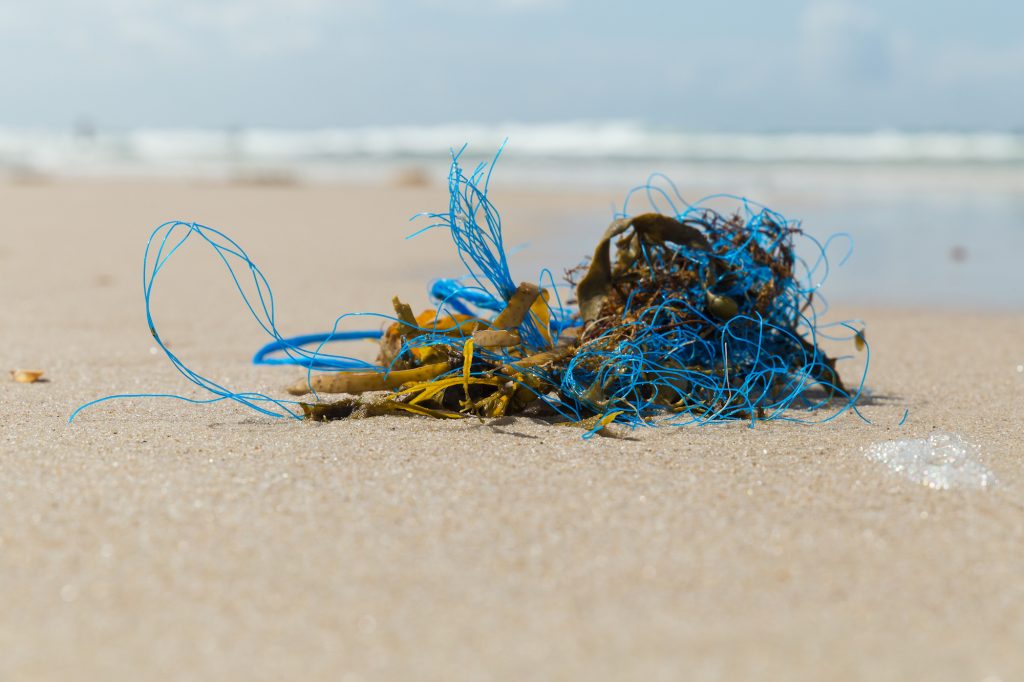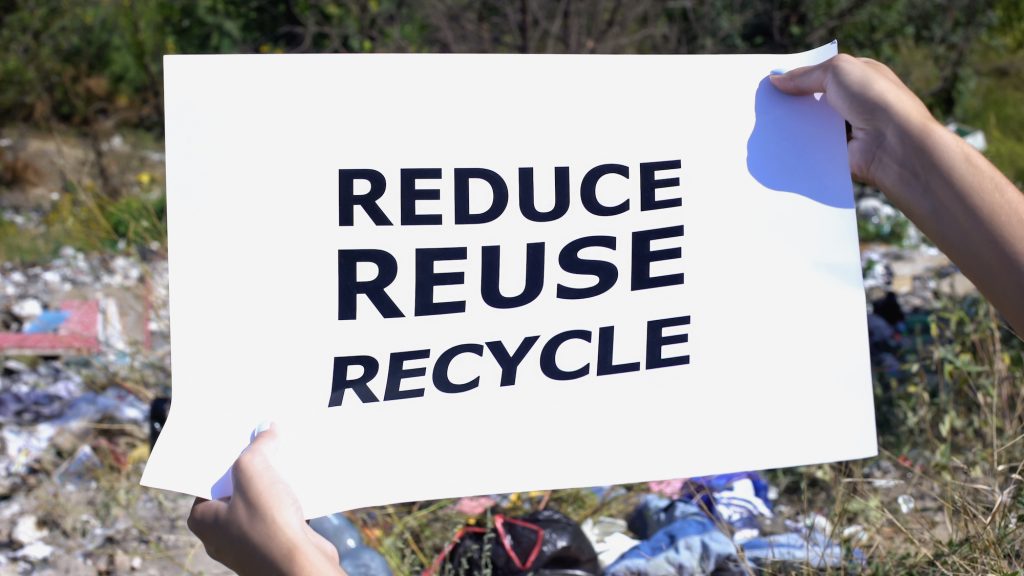Emerging environmental pollution by plastic particles

Since its beginning in the 1950s, the mass production of plastic steadily increased, and plastic became one of the most important consumables for humans1. Nowadays, we are aware of the challenges of plastic use such as non-degradability and the problematic management of waste disposal. Yet, almost every food packaging, fabric, and even cosmetics contain plastic. Although efforts are made to recycle the produced plastic, discarded waste is still partly released into the environment2,3: Industry wastewater containing plastic particles enters and pollutes the oceans, waste disposal is not tightly controlled so that plastic is improperly discarded, and airborne plastic particles, for example from tire wear, deposit on plants and soil. Today, around 70 years after plastic production was started, plastic waste and its remnants can be found in almost every corner of our planet.
Incresing incidence of environmentally-related human diseases
Within the last few years, more and more diseases and their progression were linked to the influence of environmental cues. While hazardous chemicals are undeniable risk factors for the development of malignant tumors, dietary components are considered possible triggers for the onset of chronic inflammatory diseases such as metabolic syndromes or inflammatory bowel disease. It is not negligible that metabolic syndromes, manifesting for instance as obesity and type 2 diabetes, are widespread diseases with increasing incidence today4. Especially in countries of the western world, these disorders are favored by a combination of different factors of unhealthy lifestyle with high calory and salt intake in combination with too little exercising. Together with our food, we are also constantly and unavoidably ingesting plastic in the form of small particles. As the technologies and resolution improve, also our knowledge about plastic contamination in human food supplies has increased. In environmental sampling studies, small plastic particles were not only detected in seafood and marine samples5, but also in bottled and tap water, salt, and even beer6,7. Furthermore, the spectrum of identified plastic particles has expanded in the last years. While the focus of interest and research has been on plastic microparticles (< 5 mm) from different polymer types until now, even smaller nanoplastic particles (< 0.1 µm) seem to contaminate our food supplies8,9. Therefore, exposure to a broad spectrum of plastic particles is not only an environmental but already a human health issue.
Plastic particles as risk for human health?
Although the problem of plastic as an environmental pollutant is widely known, it is yet poorly understood and characterized in association with diseases. However, the question arises whether and to which extent the constant exposure to plastic particles contributes to the development and progression of widespread diseases. The recent alarming estimation of potential weekly ingestion of up to 5 g plastic10 additionally underlines the need for the systematic interrogation of plastic ingestion. Previous and ongoing studies have revealed that orally ingested plastic particles can pass the gastrointestinal barrier and disseminate throughout the body. Microplastic ingestion and spread in the organism have been reported in rats, mice, and zebrafish before, where the particles underwent systemic distribution to organs like the liver, kidneys, and spleen11–13.

In our ongoing study in Bonn, especially filtration organs of the body, such as the liver and spleen, are deposition points for plastic particles, which influences organ homeostasis and immunity. Mainly Kupffer cells, the tissue-resident macrophages of the liver, accumulated plastic particles in this organ. Alarmingly, preliminary data additionally suggest profound changes in liver metabolism accompanying the plastic particle accumulation and structural changes in adipose tissue depots upon constant plastic ingestion. The liver and the adipose tissue belong to the metabolic organs in the body that regulate the processing and storage of nutrients such as lipids and glucose. This tightly adjusted process of metabolite availability controls the metabolic status of the whole organism. Liver toxicity after microplastic ingestion was previously reported with alterations in markers for lipid and energy metabolism12. Beyond, we observed changes in the liver’s glycogen storage after micro- and nanoplastic ingestion. The disruption of homeostasis in one of the metabolic organs could possibly affect the whole body. Alterations of glycogen storage in the liver, for example, could potentially influence blood glucose levels. As blood glucose is regulated by insulin secretion and glycogen storage, a dysbalanced glycogen depot in the liver is tightly interconnected with the body’s glucose/ insulin axis and, thus, also with aberrant metabolic states as diabetes and obesity. This evidence of functional and structural changes in metabolic tissues from recent studies reveals that the involuntary ingestion of plastic micro- and nanoparticles might affect organ- and whole-body metabolism. Thus, the connection between plastic ingestion and widespread metabolic diseases with rising incidences needs to be clarified.
In a nutshell, plastic particles from food products are an important route for plastic entry into the human body and might be reconsidered as an environmental cue with inflammatory and metabolic effects in future clinical studies. As plastic polymers are not fully degraded, but rather decompose to smaller and smaller particles, the presence of plastic debris poses a severe hazard to the ecosystem and requires a reduction of plastic burden in the future to protect the environment, animals, and humans.
Author: Frederike Graelmann
References:
1. Geyer, R., Jambeck, J. R. & Law, K. L. Production, use, and fate of all plastics ever made. Science Advances 3, 1–5 (2017).
2. Jambeck, J. R. et al. Plastic waste inputs from land into the ocean. Science 347, 768–771 (2015).
3. Eriksen, M. et al. Plastic Pollution in the World’s Oceans: More than 5 Trillion Plastic Pieces Weighing over 250,000 Tons Afloat at Sea. PLoS ONE 9, 1–15 (2014).
4. Saklayen, M. G. The Global Epidemic of the Metabolic Syndrome. Current Hypertension Reports 20, 1–8 (2018).
5. Ribeiro, F. et al. Quantitative Analysis of Selected Plastics in High-Commercial-Value Australian Seafood by Pyrolysis Gas Chromatography Mass Spectrometry. Environmental Science and Technology 54, 9408–9417 (2020).
6. Mason, S. A., Welch, V. G. & Neratko, J. Synthetic Polymer Contamination in Bottled Water. Frontiers in Chemistry 6, 1–11 (2018).
7. Kosuth, M., Mason, S. A. & Wattenberg, E. v. Anthropogenic contamination of tap water, beer, and sea salt. PLoS ONE 13, 1–18 (2018).
8. Wagner, S. & Reemtsma, T. Things we know and don’t know about nanoplastic in the environment. Nature Nanotechnology 14, 300–301 (2019).
9. Gigault, J. et al. Current opinion: What is a nanoplastic? Environmental Pollution 235, 1030–1034 (2018).
10. Senathirajah, K. et al. Estimation of the mass of microplastics ingested – A pivotal first step towards human health risk assessment. Journal of Hazardous Materials 404, (2021).
11. Walczak, A. P. et al. Bioavailability and biodistribution of differently charged polystyrene nanoparticles upon oral exposure in rats. Journal of Nanoparticle Research 17, 1–13 (2015).
12. Deng, Y., Zhang, Y., Lemos, B. & Ren, H. Tissue accumulation of microplastics in mice and biomarker responses suggest widespread health risks of exposure. Scientific Reports 7, 1–10 (2017).
13. Lu, Y. et al. Uptake and Accumulation of Polystyrene Microplastics in Zebrafish (Danio rerio) and Toxic Effects in Liver. Environmental Science and Technology 50, 4054–4060 (2016).
